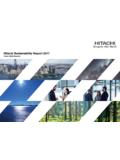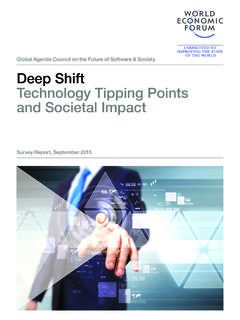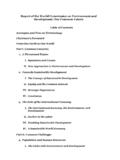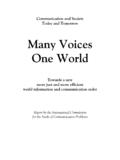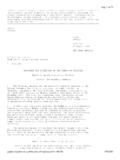Transcription of The Androgen Excess and PCOS Society criteria for …
1 The Androgen Excess and PCOS Society criteria for the polycystic ovary syndrome : the complete task force report Ricardo Azziz, , ,a Enrico Carmina, ,b Didier Dewailly, ,c Evanthia Diamanti-Kandarakis, ,d H ector F. Escobar-Morreale, , ,e Walter Futterweit, , Onno E. Janssen, ,g Richard S. Legro, ,h f Robert J. Norman, ,i Ann E. Taylor,j and Selma F. Witchel, ,k (Task Force on the Phenotype of the polycystic ovary syndrome of The Androgen Excess and PCOS Society *). a Cedars-Sinai Medical Center and The David Geffen School of Medicine at UCLA, Los Angeles, California (Task Force Chair).
2 B University of Palermo, Palermo, Italy; cLille University Hospital, Lille, France; dUniversity of Athens Medical School, Athens, Greece; eHospital Ramon y Cajal, Madrid, Spain; fMount Sinai School of Medicine, New York, New York; gUniversity of Essen, Essen, Germany; hPennsylvania State University School of Medicine, Hershey, Pennsylvania; iUniversity of Adelaide, Adelaide, Australia; jNovartis, Cambridge, Massachusetts; and kChildren's Hospital of Pittsburgh, Pittsburgh, Pennsylvania Objective: To review all available data and recommend a definition for polycystic ovary syndrome (PCOS) based on published peer-reviewed data, whether already in use or not, to guide clinical diagnosis and future research.
3 Design: Literature review and expert consensus. Setting: Professional Society . Patients: None. Intervention(s): None. Main Outcome Measure(s): A systematic review of the published peer-reviewed medical literature, by querying MEDLINE databases, to identify studies evaluating the epidemiology or phenotypic aspects of PCOS. Result(s): The Task Force drafted the initial report , following a consensus process via electronic communication, which was then reviewed and critiqued by the Androgen Excess and PCOS (AE-PCOS) Society AE-PCOS Board of Directors. No section was finalized until all members were satisfied with the contents, and minority opinions noted.
4 Statements were not included that were not supported by peer-reviewed evidence. Conclusion(s): Based on the available data, it is the view of the AE-PCOS Society Task Force that PCOS should be defined by the presence of hyperandrogenism (clinical and/or biochemical), ovarian dysfunction (oligo-anovula- tion and/or polycystic ovaries), and the exclusion of related disorders. However, a minority considered the possi- bility that there may be forms of PCOS without overt evidence of hyperandrogenism, but recognized that more data are required before validating this supposition.
5 Finally, the Task Force recognized and fully expects that the def- inition of this syndrome will evolve over time to incorporate new research findings. (Fertil Steril 2009;91:456 88. 2009 by American Society for Reproductive Medicine.). Key Words: polycystic ovary syndrome , hirsutism, menstrual dysfunction, phenotype, criteria The Androgen Excess and PCOS Society (AE-PCOS, for- premature adrenarche. Members include basic and clinical merly the Androgen Excess Society ) is an international orga- scientists, and clinicians, whose major interest is the etiology, nization dedicated to promoting knowledge, and original diagnosis, treatment, and prevention of Androgen Excess dis- clinical and basic research, in every aspect of Androgen orders.
6 The Society disseminates information to the medical Excess disorders, such as the polycystic ovary syndrome , and scientific community, and the lay public. The Society ap- nonclassic adrenal hyperplasia, idiopathic hirsutism, and pointed the Task Force on the phenotype of the polycystic ovary syndrome (PCOS) and charged it with reviewing all current definitions of PCOS, reviewing all published evi- Received February 12, 2008; revised June 19, 2008; accepted June 23, dence, and recommending a definition, whether currently 2008. used or new, that would be based on currently available *Formerly the Androgen Excess Society .
7 Is a consultant for drug development at Proctor & Gamble. has evidence. nothing to disclose. has nothing to disclose. has nothing A brief summary of the Task Force's year-long investiga- to declare. has nothing to disclose. has nothing to dis- close. has nothing to disclose. is a consultant for Glaxo tion and conclusions were previously published (1). In the Smith Kline, Ferring, Quat. Rx, Organon, Serono, and Solvay. following we present in greater detail the information and has nothing to disclose. is an employee of Novartis. has reasoning that resulted in the Task Force's conclusions, to nothing to disclose.
8 Reprint requests: Enrico Carmina, , Department of Clinical Medicine, allow individual investigators and practitioners to evaluate University of Palermo, via delle Croci 47, 90139 Palermo, Italy (FAX: the data gathered and the rationale presented for them- 39-091-655-5995; E-mail: selves. 456 Fertility and Sterility Vol. 91, No. 2, February 2009 0015-0282/09/$ Copyright 2009 American Society for Reproductive Medicine, Published by Elsevier Inc. THE polycystic ovary syndrome tific literature. This is becoming particularly important as The disorder that eventually would be known as the polycys- the field moves to the establishment of larger clinical trials, tic ovary (or ovarian) syndrome (PCOS) was initially de- and to studies of the molecular biology and genetic nature scribed by Stein and Leventhal in 1935 (2).)
9 However, the of the disorder. Furthermore, definitions not based on clear- findings of polycystic (or cystic oophoritis or sclerocystic) cut evidence have the potential effect of discouraging future ovaries dates back at least a century before that (3 5). Despite and needed research into the nature of the disorder, its the difficulty in ascertaining the prevalence of this disorder breadth, and phenotype. Consequently, a contemporaneous among women there are convincing data today to suggest definition based on what is currently known will benefit fu- that it affects between 6% and 8% of women worldwide, ture investigations.
10 Using the National Institutes of Health (NIH) 1990 criteria It is also understood, and actually hoped for, that the defi- (6 10), such that it can be considered one of the most com- nition of this syndrome will be modified over time to incorpo- mon disorders of humans, and the single most common endo- rate new research findings. As understanding of the crine abnormality of women of reproductive age. molecular and genetic aspects of the disorder increases, the There is little disagreement that PCOS should be consid- definition will be expanded, contracted, or divided to incor- ered a syndrome , that is, a collection of signs and features, porate these new findings.


